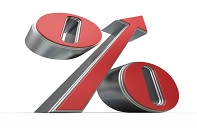
The big four banks have seen a surge in market share by targeting fixed rate mortgages, edging out the non-majors who once dominated this segment.
According to the latest AFG Competition Index, the major banks accounted for 77.9 per cent of total fixed rate mortgages in May, up from 46.2 per cent in June 2015.
To continue reading the rest of this article, please log in.
Looking for more benefits? Become a Premium Member.
Create free account to get unlimited news articles and more!
Looking for more benefits? Become a Premium Member.
The non-majors collectively accounted for just 22.1 per cent of all fixed rate mortgages, down from 53.8 per cent a year prior.
ANZ was notably the dominant player in this segment, lifting their fixed rate share from 11.3 per cent in March to 20.2 per cent in May.
Suncorp fared the worst, with the bank’s fixed rate market share tumbling from 20.6 per cent in March to 4.8 per cent in May.
The Index also revealed the results for investor market share.
In May, the majors accounted for 73 per cent of total investor loans, up from 71.2 per cent in June 2015, while the non-majors accounted for 27 per cent of total investor loans, down from 28.8 per cent.
In terms of overall market share, the majors made up 70.1 per cent of all loans in May, while the non-majors accounted for 29.9 per cent of all loans throughout the month.
“The winner in the battle for overall market share between the majors for the quarter was the Westpac Group, with Westpac, Bank of Melbourne, St George and Bank SA delivering a combined 20.5 per cent of all loans in May, up from 17.6 per cent at the end of February,” AFG general manager of sales and operations, Mark Hewitt, said.
“This win has helped them make up ground to close in on the CBA stable, with the CBA and Bankwest total dropping from 30.8 per cent down to 24.5 per cent as the quarter drew to a close.”
Of the non-majors, ING Direct delivered the strongest result, lifting their overall market share from 1.5 per cent to 4.3 per cent over the three months to May 2016.
“At the other end of the scale, Bank of Queensland has slid again this quarter. After riding high at 7.0 per cent back in December 2015, they have dropped back significantly the past two quarters to be at 0.4 per cent by the end of May,” Mr Hewitt said.
Mr Hewitt noted that these types of drops were often the result of service levels blowing out.
“If a broker has a client that needs their home loan settled in a reasonable time frame, they are not going to risk placing the business where it will be held up by slow processing times,” he explained.
“We have always said that a broker’s decision on where to place the client is driven by pricing, policy and service: a home loan that has a competitive interest rate, with a lending policy that meets the client’s individual circumstances and high-quality service that will ensure a smooth settlement.
“All three of these components must line up for the recommendation to go a lender’s way.”
[Related: Auswide unveils new rates for investors]
 Login
Login







